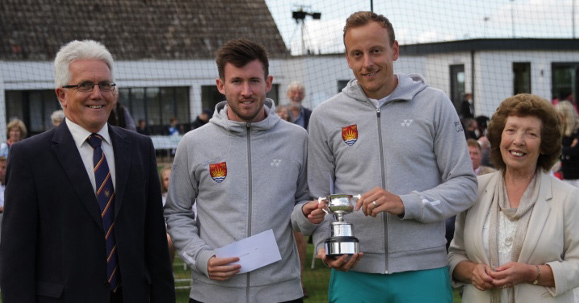History
125 Years
The history of Framlingham Tennis Tournament
The following Pages are taken from the 125th Anniversary Tournament that took place in 2018. This document was carefully and meticulously prepared by our previous Chairman, James Lightfoot and we have him to thank for this splendid piece of work.
This is a history of which any sporting event should be immensely proud……and we are!
Jeremy Scowsill
Chairman
The History of the Tournament Part One: 1883-1889
The Tournament becomes established
In 1883 the first Tournament was held on four grass courts in the magnificent surroundings of Hurts Hall near Saxmundham. It was reported that all the aristocracy of the neighbourhood were present.
Lawn Tennis being a new recreation the Tournament was a considerable sensation in the Town. 900 people paid for admission.
The Monement Brothers lost only one set between them in reaching the men’s singles final. Sportsmanship was evident from the outset because having done so they shared the prize.
As was expected Miss G Want won the Inaugural Ladies Singles in easy style beating Miss Davey 6-2, 6-0.
By the following year the Tournament had already acquired a leading position in the County for an Annual Tournament.
The Committee had to work hard.
Reports of 1885 were dominated by an on-court dispute. The Umpire called “out” and the Line Judge “in” simultaneously. The Committee had to be called to the court to resolve the dispute.
They were kept busy in 1888 too producing a ruling when a player refused to change ends.
As the 1880s drew to a close veteran men’s and handicap boys singles had been added. Also a ‘local’ singles the first of which produced the result that A M Darling defeated L R Flick 0-6, 6-0, 6-0.
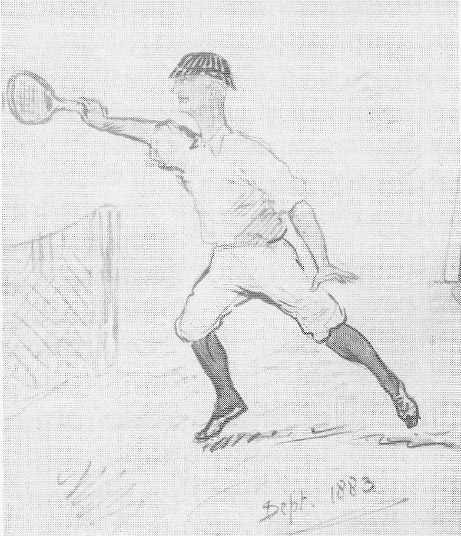
W B Monement, joint Men’s Singles Winner 1883
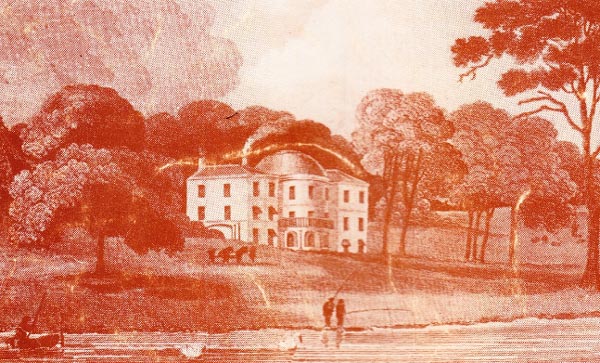
Hurts Hall Park, Saxmundham
The History of the Tournament Part Two: The 1890s
At the start of this period it was apparent that that it was mainly those who played tennis took much interest in it and they belonged principally to the leisured classes.
However, at the end of the century, the Tournament had become increasingly popular. In the last year of the decade the need for more courts meant others had to be laid by Clarke the groundsman.
In 1894 play carried on through the rain, the players leaving left the court ‘like drowned rats’.
Ball girls were used in the men’s singles final in 1985 and it is therefore believed the tournament was the first to employ ball girls.
H L Doherty started to play in 1897. He was generally acknowledged as the finest player before the first World War. That year he won the first of his eight Wimbledon Titles with his brother. He went on to be Wimbledon Singles Champion for five years from 1902 to 1906.
However, another player who became famous started to play at this time, namely Herbert Roper Barrett. Their third round match in 1897 has been described as one of the greatest in the tournament’s history. Everyone wanted to see the contest and the other five courts remained deserted. The match went to 4-4 in the final set before Doherty won.
The following year, he was competing in the Homburg Cup so did not defend with Barrett entering under the pseudonym ‘A.L.G.Y Dear’!
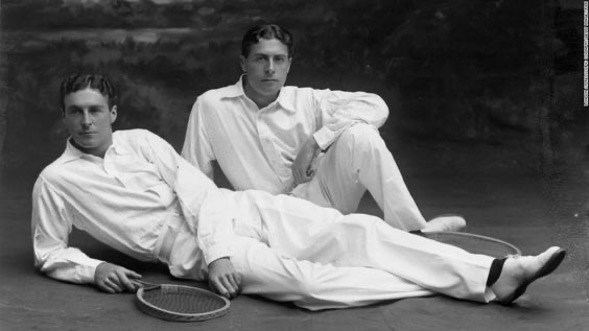
H L Doherty & his brother (photo from public domain)
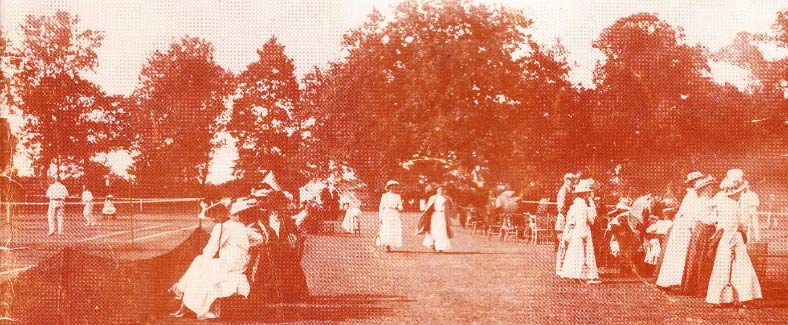
Hurts Hall Courts
The History of the Tournament Part Three: 1900-1913
Herbert Roper Barrett reigns
In 1902 Miss C M Wilson won the first of her three Singles Title. She was described as a ‘great Volleyer’.
H S Scrivener was only asked to referee the tournament on short notice in 1895 when the then referee fell off his bicycle on the eve of the tournament. After being telegraphed by the tournament on the Monday, he remained the tournament referee until 1921, and would referee at Wimbledon in 1907-1914.
The tournament had now moved to its current date of the first week in August.
However, the open events were run Monday to Wednesday with the local events following Thursday to Saturday.
There was naturally too much rain or excessive sun, even snow.
In 1906 there was a downpour towards the end of the mixed final but the players in the true tradition of the tournament would not leave the court until the match had finished.
In 1900 the ‘visually restrained’ Committee played ‘snow balling’.
On the men’s side the ‘genial little solicitor’ Roper Barrett won the singles in most years.
He helped ensure no alcohol was sold. In 1911 excessive heat reduced the men’s singles from five sets to three. Roper Barrett was a particularly popular winner since he had retired from Wimbledon with heart problems brought on by the heat and was advised against playing in the tournament.
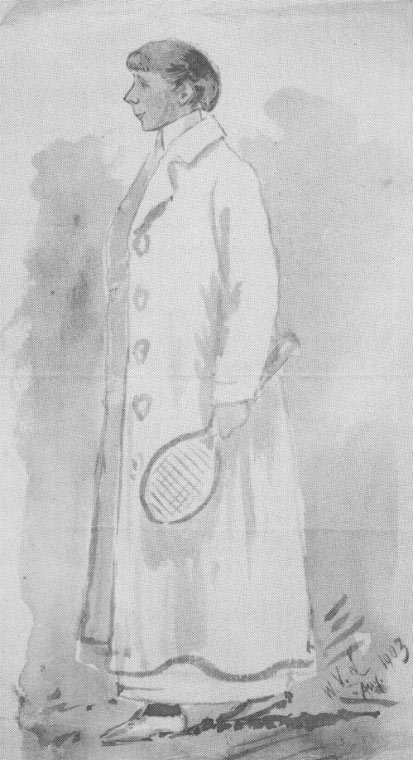
Miss C M Wilson, three times Singles Champion
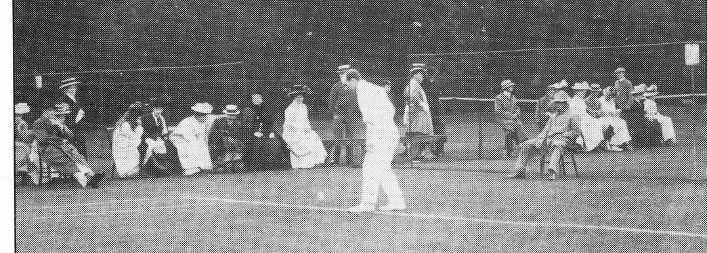
Herbert Roper Barrett

Roper Barrett helped ensure no alcohol was sold.
The History of the Tournament Part Four: 1914-1939
Framlingham College
Monday 3 August 1914 was the first day that the Tournament was played on the school cricket ground at Framlingham College. Nine courts had been prepared after the Headmaster kindly offered to rescue the venueless tournament.
The reports of that Tournament were naturally brief as the East Anglian headline of the 5 August reads:
“Britain declares war on Germany”.
By Thursday the numbers on the local events had declined as men went off to join Home Defence and the ladies to the Red Cross Society. Competitors going away to play the ‘Great game’ of their lives.
When the Tournament restarted in 1919 H W Austin bode no ill-effects from long captivity in the hands of the Turks. He was nonetheless overwhelmed in the final with Roper Barrett.
There followed a ‘Halcyon period’. Many Wimbledon champions played regularly.
Great crowds came to see Randolph Lycett and he won the singles four times in a row from 1922.
Roper-Barrett went on to win many Wimbledon events and to Captain the Davis Cup. Approaching 50 he decided to make one last attempt at our singles in 1921 which he won for the seventeenth time F G C Fison. That year also saw the arrival of a new referee, F R Burrow who continued until 1933 with his ever present large cigar.
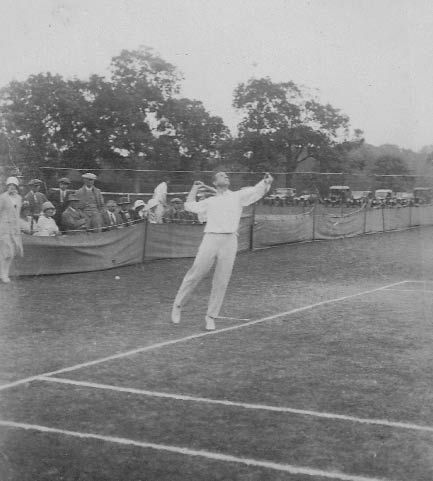
Randolph Lycett
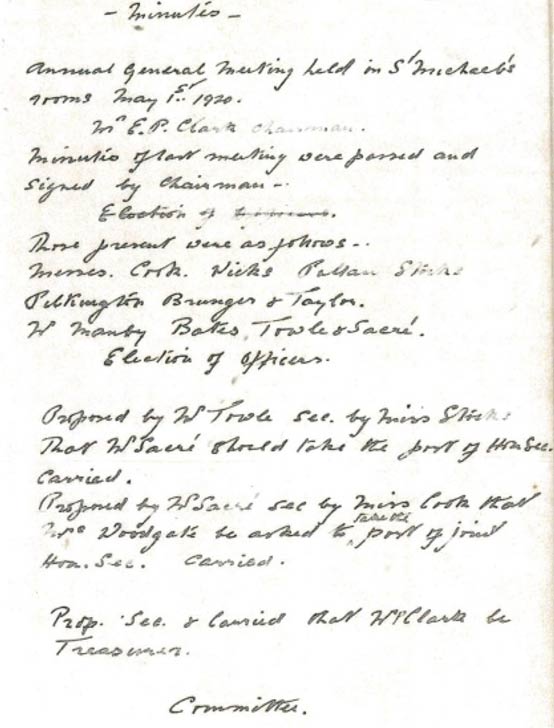
1920
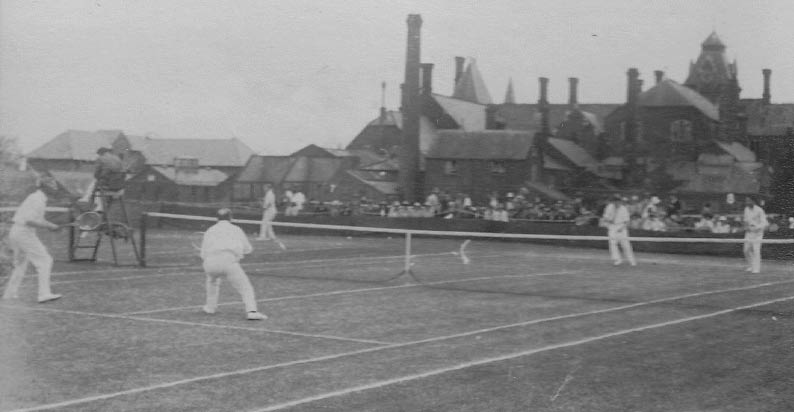
Herbert Roper-Barrett (right foreground)
A Halcyon Period
In 1926 Lycett was beaten by ‘Bunny’ Austin (he went on to reach the Wimbledon final in 1938). He and Miss Ridley (1935 Champion) appeared on the cigarette cards on this page.
Some of our wonderful silver trophies were donated in this period.
The surname Lycett does appear on the ladies’ trophy, for example, in 1927 she won the final set 7-5 following a sterling performance from Miss D Biddle from Stradbroke one of the youngest Suffolk County players
J W Legg took over as Referee, Secretary and Treasurer from H E Singleton-Cooper who wrote in his last report:
“It was one long struggle against the weather. The weather Victorious. Expenses for Luncheons seems heavy but it must be remembered this included £2.16.0 for beer for the men! I shall always look back on my association with the tournament as a very happy part of my life”.
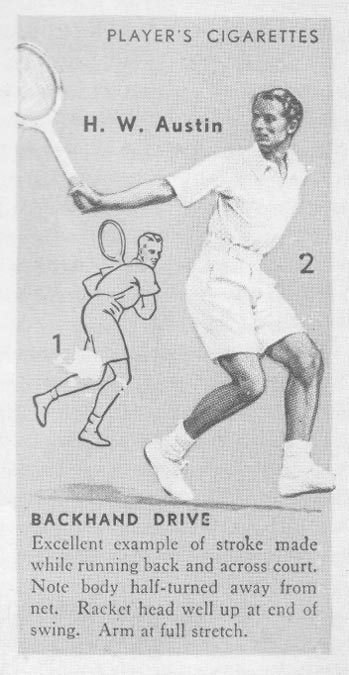
H W Austin, Champion 1926
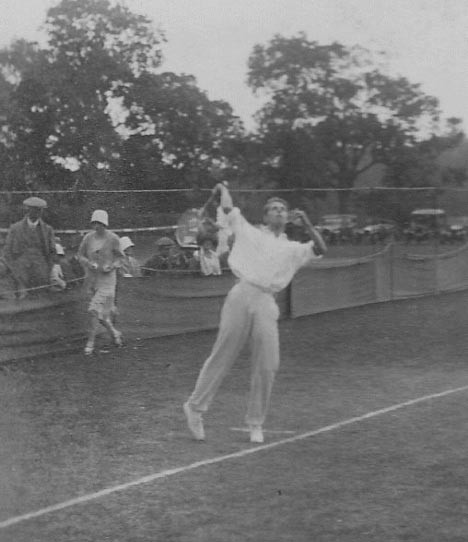
Bunny Austin
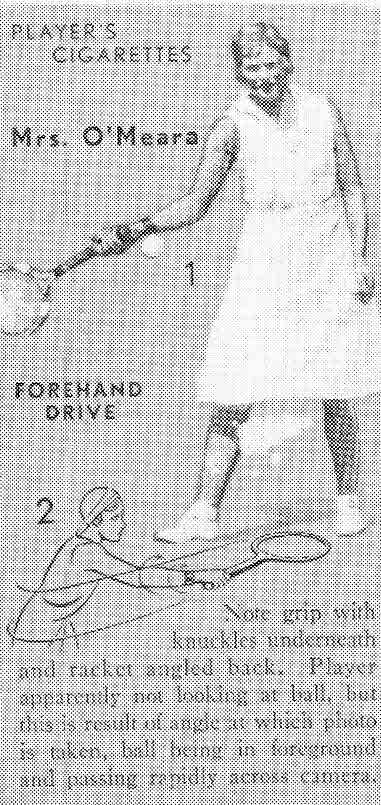
Mrs J C O’Meara (nee Miss J C Ridley), Champion 1935
Tournament Programme Covers
1934
I could not resist putting this in. Although of A N Other Tournament the words in a note from my Father to my son George say, referring to the photo below:
“Me at the Carlisle Lawn Tennis Tournament c1913. 21 years later, Grandpa and Grandma met each other for the first time at this exact spot ie the Tournament Refreshment Tent – at 6pm precisely.”
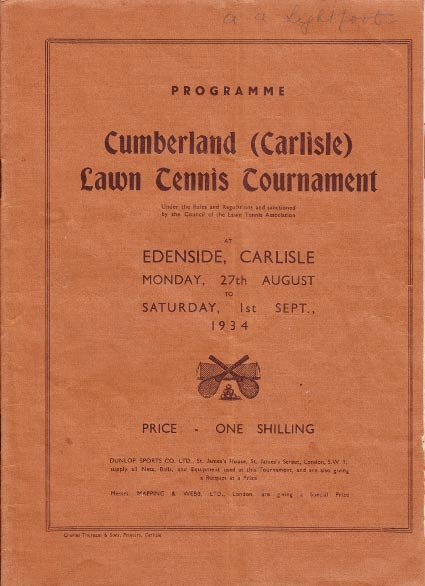
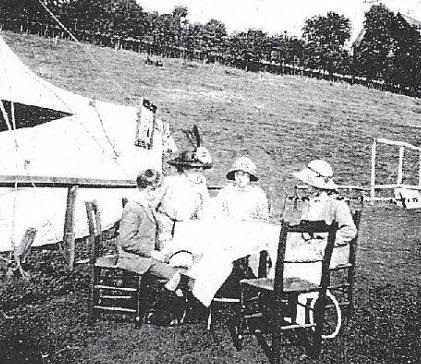
1964
He could have gone on to say:
Later Grandma got on the front of this Framlingham programme by being on its committee (which as she was for many years) and in the East Anglian as a result … that’s her in the blanket on the right below.
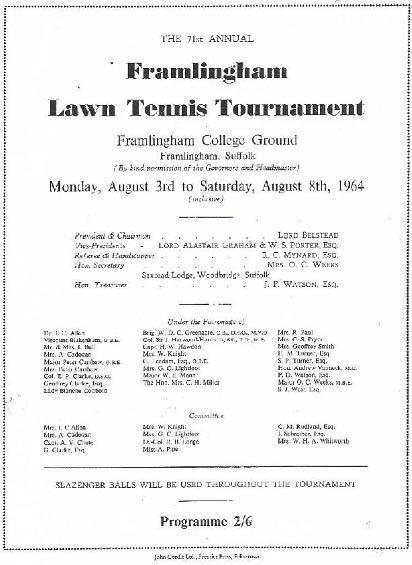
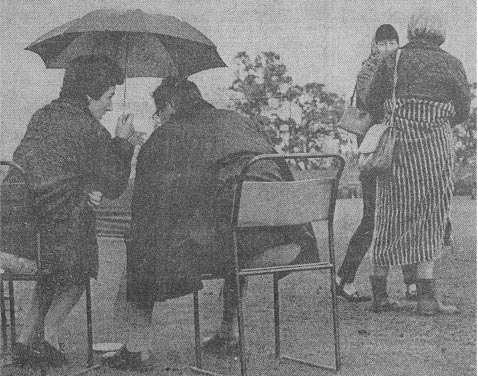
1936
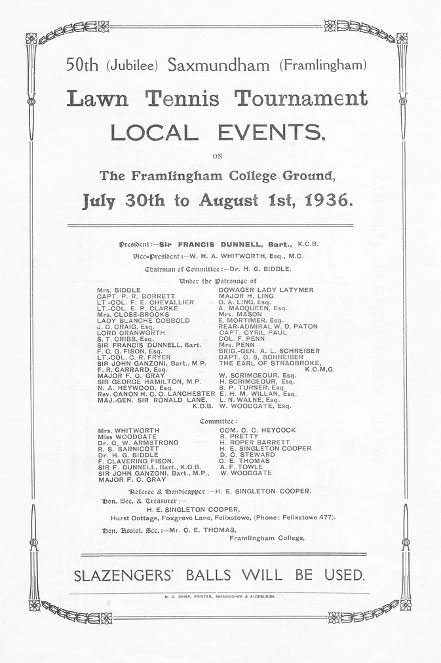
1936
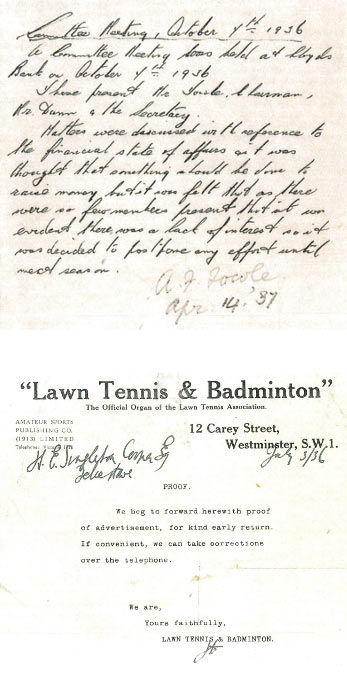
The History of the Tournament Part Five: 1946-1978
The Mynard Era
The tournament was not held between 1940 and 1946.
A new referee in 1947 was R C Mynard who would become a stalwart of the Tournament. Spectators flocked to the ‘Revival Tournament’. The legendary John Richardson played in this tournament and so (I believe) did Peter Downing.
However, post war shortages put the tournament in jeopardy. For example, the lack of paper meant there were no programmes. Apparently the Suffolk Championships were dominated by Beer, ie Freddie Beer who won the first of his many Suffolk Singles titles in 1950.
This could be known as the Mynard era because he was referee 31 times. The instructions that emerged were rarely questioned and never disobeyed!
A new star had emerged on the ladies front, namely 18 year old Miss J M Stedman. In 1959 with a game described as “More controlled and confident” as the match developed Joan won the first of her many Suffolk Singles in the third set. Joan won it four years in a row from 1964-1967.
Julian Tatum started to win the Suffolk Singles but there were many years of battles for Suffolk Supremacy between Julian and Alfie Long. In 1968 this pattern was broken when ‘Pip’ Wooton won.
That year also witnessed the emergence of two ladies who would dominate Suffolk Ladies’ tennis for the next ten years, Sue Mornard and Yvonne Grimwade. With Yvonne just winning that year and ending a run of seven wins by Joan Stedman out of the previous nine years (but Joan won again in 1975).
Reg Mynard was supported by an able committee including Mrs O C Weeks as an excellent secretary between 1963 and 1976.
Peter Mornard and his sister, Sue Fulcher, were much in evidence in the period with Sue winning many Suffolk singles titles.
In 1970, Robin Drysdale was to have his first senior tournament success as just 17. Robin went on to reach the quarter final of the 1977 Australian Open and played in the Davis Cup.
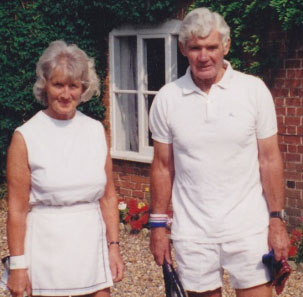
Peter Downing
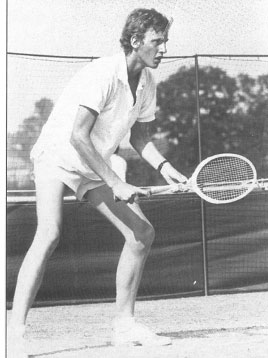
Robin Drysdale, 1970 Champion
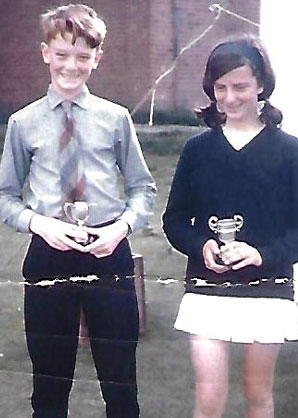
Chris Clark & Christine Nugent: Winners 1966
Memories of Framlingham Tennis tournament in the 1950s
By Tony Garnett: Sports Editor of the East Anglian Daily Times for many years.
My father played in the Framlingham Tennis tournament in the twenties when Wimbledon stars like Bunny Austin and Roper Barrett were the stars on the same grass courts which are used today. The event switched from Hurts Hall in Saxmundham to Framlingham in 1902.
For many it has become a family tradition to play at Framlingham and I have many happy memories of the event in the late fifties.
Those were the days when I had two wooden-framed rackets, one strung by gut and the other by nylon for use in wet weather.
Reg Mynard was in charge when I first played as a junior. He was succeeded by jovial former Polish Davis Cup star Cup star ‘Spike’ Spychala who always showed immense charm and good humour.
Very few people knew that after capture by the Soviet Army in 1939 ‘Spike’ escaped and took the identity of ‘Marian Tworowski’ as a member of the Polish Resistance. He was awarded the Gold Star or Merit by the Polish Government in 1966.
Who can forget the men’s doubles partnership of John Ganzoni (later Lord Belstead) and Colonel Leader? Their tennis manners were exemplary with profuse apologies if ever they won a point with a net chord.
The Truman family, Christine, Nell and Humphrey were all there. I can still picture Mrs Truman watching a match on a court to the left of the pavilion.
Apart from Christine, another former Wimbledon star was Jean Bostock who was rated the most promising junior in Great Britain before the Second World War. She was ranked sixth in the world in 1948 and appeared at Framlingham during the next decade.
This was the era when Cynthia Vincent, Suffolk’s England hockey international, maintained an impressive level at tennis having played at Junior Wimbledon.
‘Pip’ Wootton was a key Suffolk player. His close friend Doug Millward also played for the county but always missed Framlingham because of football training with Ipswich Town.
Freddie Beer came from Devon year after year to compete with considerable success.
Julian Tatum, now a member of the All-England Club at Wimbledon, was still in the junior events. I stayed with the Tatum family in Felixstowe for the junior tournament at Bath Road.
Alfie Long was younger still. He was a Suffolk champion. He could hardly see over the net when he beat me on a new green hard court at Clare in my final year as a junior. It was after that defeat that cricket became my priority!
Peter Mornard played a huge role in the running of the Framlingham tournament for many years. Back in the fifties he stayed with my family at Kelsale Hall in the days when I borrowed my mother’s green Alvis to drive to tournaments.
His sister Sue and her husband Larry Fulcher ran a very popular junior event at Framlingham which was later incorporated into the main week.
Joan Stedman, now Joan Hassell, started her tennis career in 1956 and is still going strong as captain of the Great Britain Over 75 team.
Another feature at Framlingham in those days was East Anglian Daily Times correspondent Reggie Russell dressed in a dark suit, even in the warmest of weather, with a red rose buttonhole.
It is amazing how once the Quilibets Cricket Week is over for the entire field is transformed into tennis courts within a few days.
Framlingham Tournament became a sporting haven where good manners prevailed and the refreshment tent provided delicious homemade cake. Happy days.
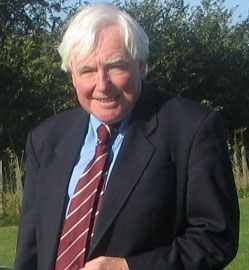
Tony Garnett
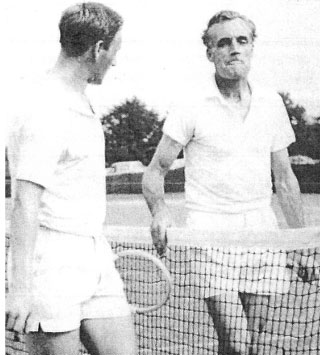
Julian Tatum & Freddie Beer
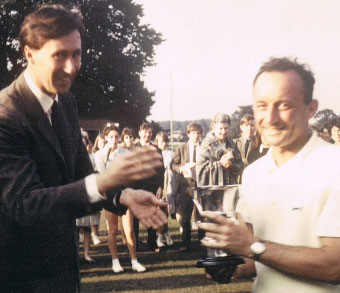
Lord Belstead & Pip Wootton
Exclusive Framlingham in the 1960s
When I first went to Framlingham in early 60s, it seemed very exclusive, a quality helped by the fact it was impossible to get to without your own transport.
I finally made it when I scraped together enough to buy a 1936 Morris 8 – oh, that I had kept it!
I double-de-clutched my way through its three gears on to the grounds of Framlingham College to draw up at the very edge of the courts alongside splendid limos with tartan rugs spread round them, chairs and fine picnic hampers eyed by the inevitable Labradors. The titled families of the county were out in force with their children renewing their friendships on their return from their respective boarding schools. Fresh air, exercise, social interaction rather than any compelling desire to win was obvious amongst the titled competitors in the junior events.
One did not turn up in one’s tennis kit; ‘smart casual’ for men, dresses for women who changed back into them to return home often leaving their tennis clothes to be laundered overnight by the matron in the boarding house where one changed.
It was an eye-opener but a wind of change was coming at least in the Suffolk County Ladies world. A place in the County week team was greatly sought after but its membership had become entrenched and results slipped as the team aged but hung on in. Young players just out of the juniors started to beat them in the closed events at Fram and gradually ousted them from the team.
Suffolk ladies began their best run from Group 6 to Group 2 on the back of these Framlingham results. Twins Mary and Barbara Kidner (now Pretty and Means) were a formidable duo, Sue Mornard (Fulcher), Joan Steadman (Hassell), Yvonne Grimwade dominated the Suffolk ladies scene.
The work of feeding through Junior Girls to this elite group was undertaken by the Suffolk Girls County Committee consisting of Dulcie Boar, Ghetal Lightfoot and my mother, Ella Wood (only taking it on once I was out of the juniors). They prowled the Framlingham courts talent-spotting. Ghetal easily recognisable with her casual elegance, wavy auburn hair and cigarette in its holder and Dulcie with her black hair and aquiline features and Ella taking notes.
Phillippa Hawkins (Collett), Anneli Woodcock, Sarah Hale (Rimmer), Jenny Davey (Finch) were some of the selected. Daughters of former and formidably tenacious county players, Frank Meadows and Peter Rudland also featured and Alison Meadows( Hall Wright) still graces the court. Thus the tournament at Fram has played an essential role in the development of county tennis as well as providing a unique experience.
On my first foray I only troubled the Handicap Ladies event, playing in the final a lady whose face was mainly obscured by a floppy hat , whose strokes were produced by a last minute flip of the racket and was cheered on by noisy supporters who supplied her with G and Ts. Teetotal won.
PS I found another occasion where Ann won this event, see image.
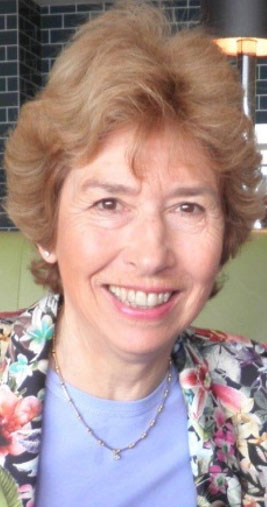
Ann Woodings
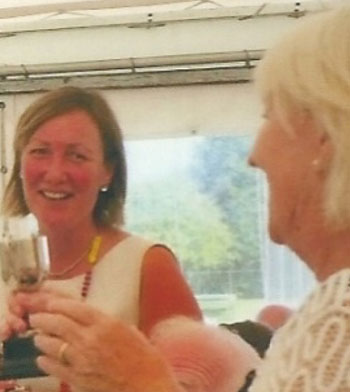
Philly Collett & Jenny Finch
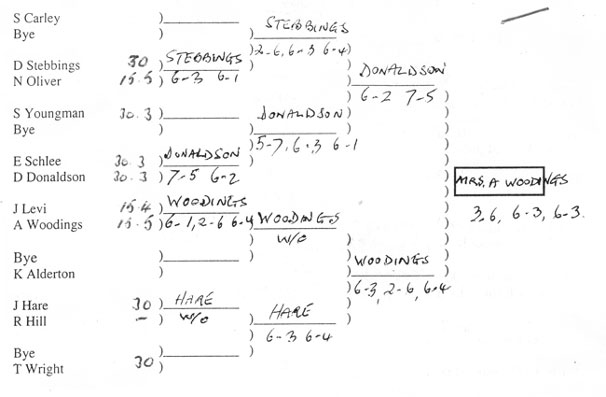
The History of the Tournament Part Six: 1978-2013
The Gordon Blake era
Gordon took over as referee from Reg in 1978. Under his calm and efficient leadership the number of events increased substantially.
The Suffolk Singles has won many times by Mark Bonney at the start of this period. He was also Suffolk men’s doubles champions for five years with three different partners, Peter Mornard, Jeremy Scowsill and Gregory Mullin-Henderson.
Ian Moore became the player to beat in the mid-1980s. Stuart Watts nearly did so in 1985. The following pages look as if it was the Moore and Watts show in the late 1980s but I only have some made up programmes. Robert Hillman and Robert Precious won the Suffolk singles before Liban Ahmed won it four times in the early 1990s.
Yvonne Grimwade (now Durham) won the open championships 13 years after she had won her first. However, the record books show it was Katie Bull that then dominated the Suffolk Singles, winning the first of her titles at the age of 13. Dee Grundy (having won Junior Wimbledon) won in 1998, beating Louise Rogers in the final. However Louise won the final against her in 1999.
Dee teamed up with Paula Moore to make a dynamic duo that year to win the Suffolk Doubles beating Louise and Sarah Jermy in the final which was a reverse of the 1996 result as the following pages show.
I have broken them up with action behind these scenes not forgetting the handicap Mixed which often went on into the dark of Saturday Evening. This reflects the extraordinary range of Events Gordon ran he added to those for Vets and Juniors where you will see names like Myles Orton winning (now in the brilliant Suffolk squad) and see also the extract from the newspaper article below.
1992 – Extract from a newspaper article: “The younger age categories were dominated by Suffolk Juniors. The all-Daynes final in the Under 14 Boys’ Singles was won by defending champion Richard, who defeated his younger brother Chris in straight sets. Raydon’s Julia Hassell scooped the U14 Girls’ Singles title.”
The centenary dinner was in 1983 that being 100 years since the first tournament but not the 100th tournament because of the gaps for the First and Second World Wars.
Much credit is due to Alan Flewitt for his research that I have been able to use for the early part of this programme.
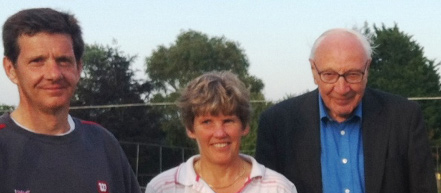
Ian Moore , Sarah Jermy & Gordon Blake
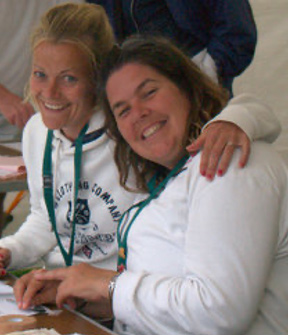
Katie Bull & Louise Rogers. Many time winners
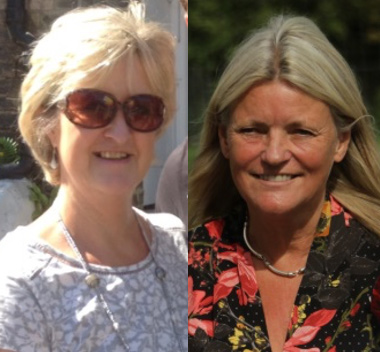
Paula Moore & Dee Grundy: Dynamic duo
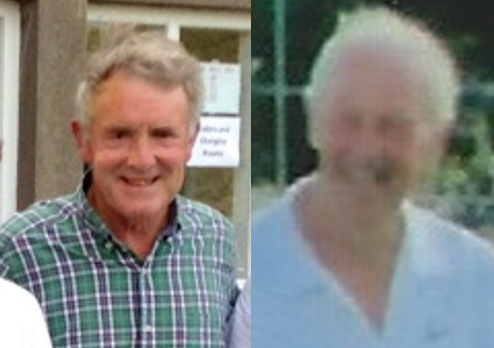
Geoff Clarke & Colin Stevenson: Winners
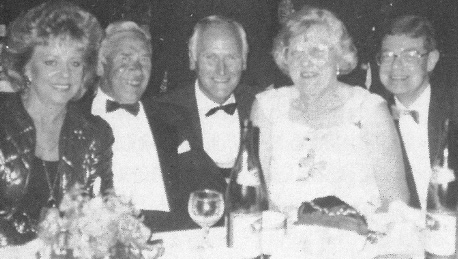
Alan Flewitt (the gentleman on the right)
The History of the Tournament Part Seven: 2013-2019
Top Men’s Squad and Record Breaking
Subsequent years the Ladies singles have been won more than once by Kari Sherington. Kari teamed up with her sister Holly to win the Suffolk Ladies doubles, Peter Mornard reporting that this was the first time two sisters had done so. Framlingham College have the good fortune of having the benefit of Kari’s coaching skills.
In the last few years an even younger generation have won the Suffolk Singles and both may by now also be playing a different Sport beyond County Level, ie Hannah Vickers in Cricket and Harriet Petley in Football.
However, last year also featured Katie Tassell in the Final again (see photo left) and with Susan Wessels of Framlingham College Katie was also in the Ladies doubles Final.
In the last few years the Suffolk Men’s singles have been won again won by Matt Hough or by two other members of the incredibly successful Men’s County squad, Ben Jones and Ryan Lambert.
Matt and his inspirational Captain, Jez Cowley usually running out victorious in the doubles following their outstanding record at County Week. They are pictured opposite with the Trophy. It was good to see two brothers in the Final Noah and Toby Cutting.
Joan Hassell became Captain of the Great Britain over 75s team and still wins events at Framlingham
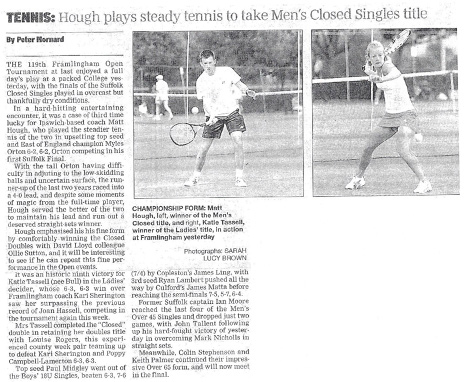
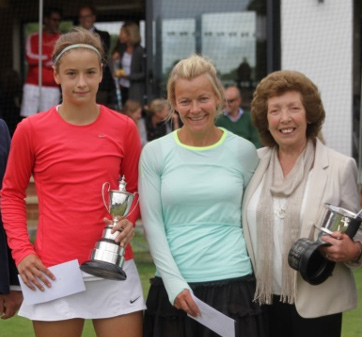
Harriet Petley, Katie Tassell & Sheelagh Watts
